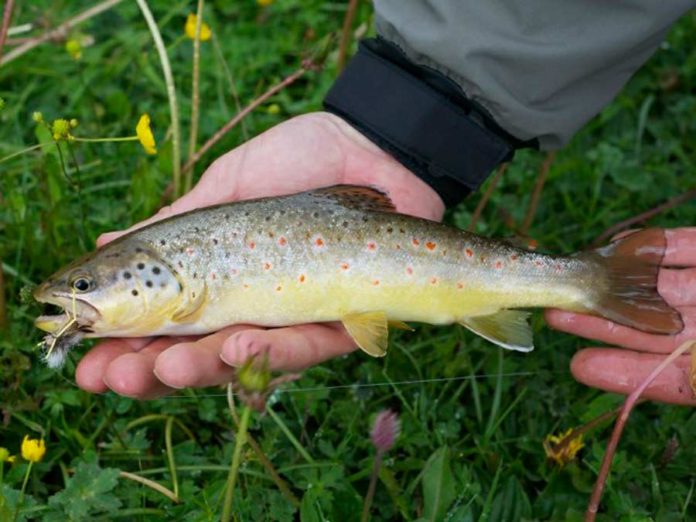Photo by Sandy Hays
One of the reasons that fly fishers love casting terrestrials is that these patterns are usually really easy to see on the water–compared to, say, a size 20 Blue-winged Olive. And one of the reasons that terrestrials are so easy to see is that they often ride really high in the water. However, experienced anglers know that you’ll catch more trout if the bug is riding lower in the water, mostly in the film.
If you watch a real grasshopper or ant in the water, you’ll note that they don’t stand up on their legs the way a mayfly does. Instead, the insect’s body is right in the film, with the legs splayed out to the side or even underwater. This is one of the reasons that parachute hoppers are so effective.

This early version of a hopper had nothing to keep it out of the film.
Photo courtesy of the American Museum of Fly Fishing
My old friend Jay “Fishy” Fullum tells a story of a day on the water when he and his wife were catching trout one after the other on his Epoxy Ant, which sits low in the film, while a couple anglers upstream couldn’t get a bit on ant patterns with stiff hackles. Of course, because of the kind of guy he is, Jay gave the unlucky anglers a few flies, and they were soon into fish, too. The Hard Body Ant is another good pattern that floats for a bit and then slips below the surface.
But even if you aren’t fishing a parachute, be careful with how much floatant you use and where you apply it. I’ve seen guides who will dress just the wing and allow the dubbed body to become waterlogged. And if there’s too much hackle on the bottom of the fly, clip it off.
“But I can’t see the fly as well if it’s low!” you might argue. A hot spot of color or a parachute post on top of a fly will help you locate it on the water, even if it’s riding low–which is just where the trout want it.
Credit: Source link






























